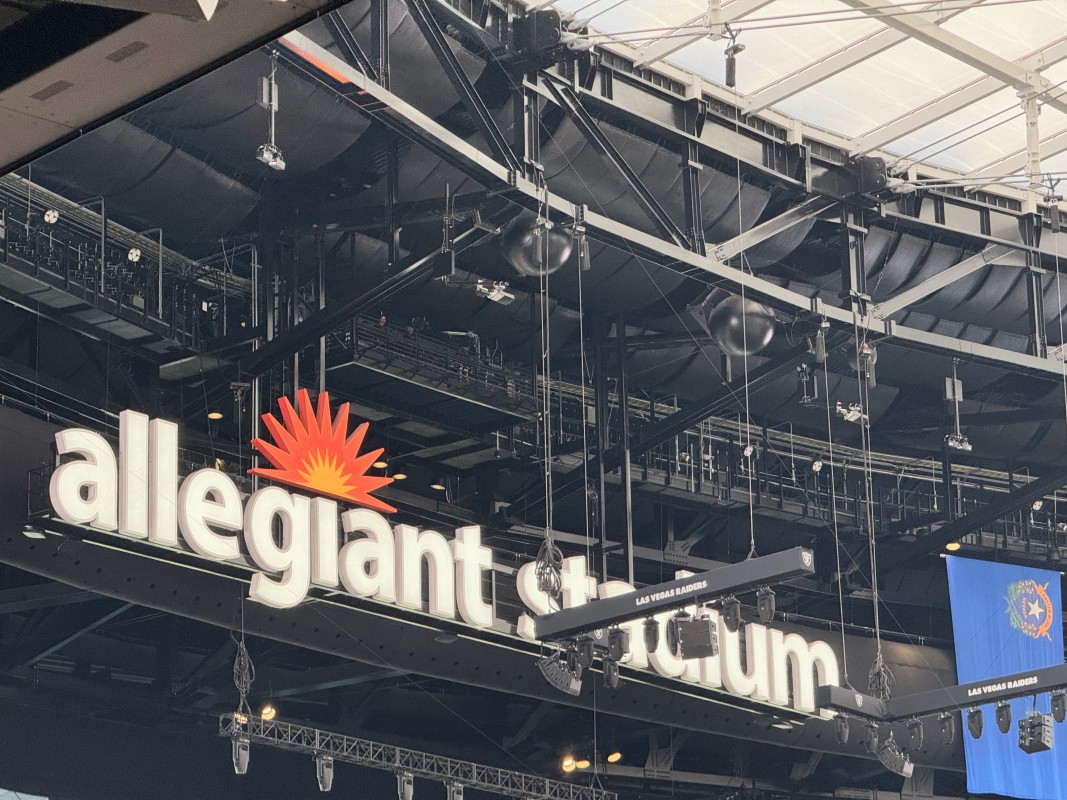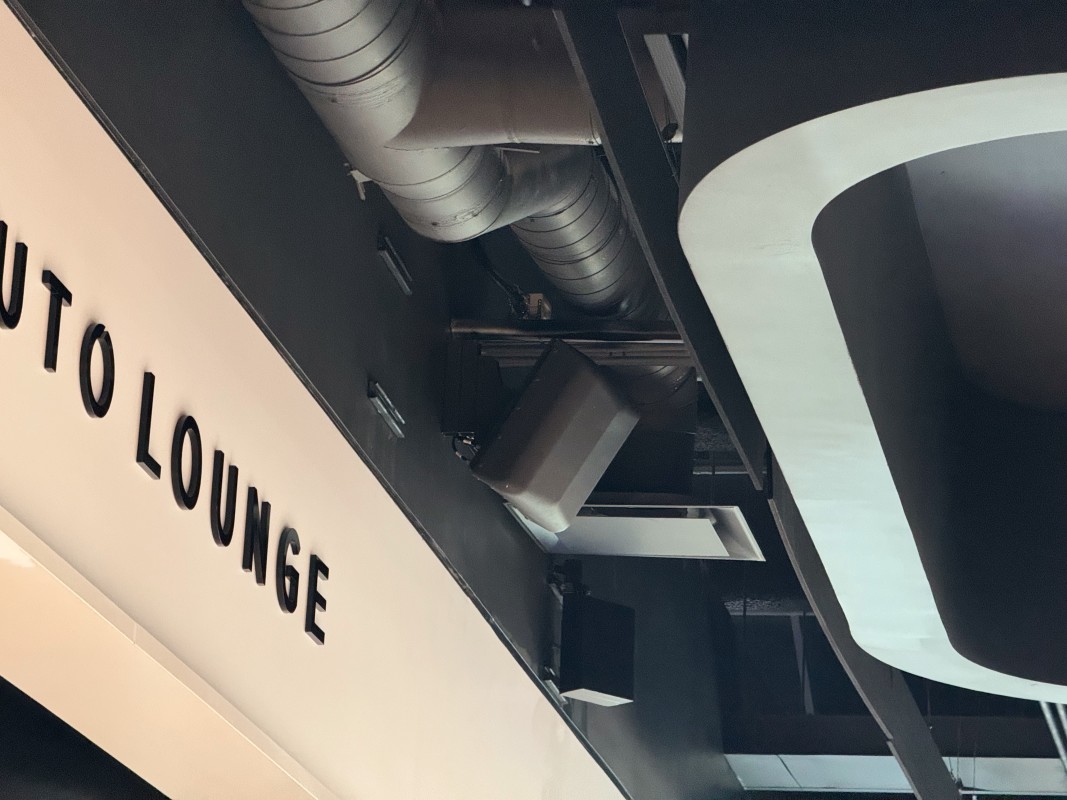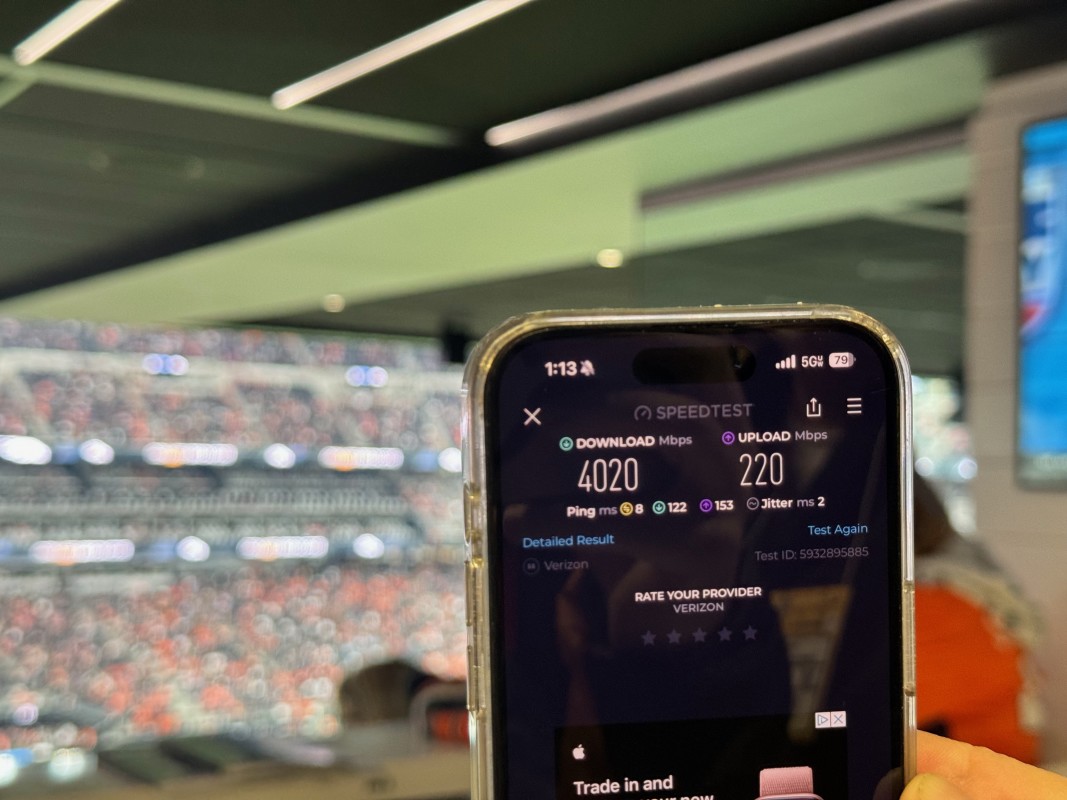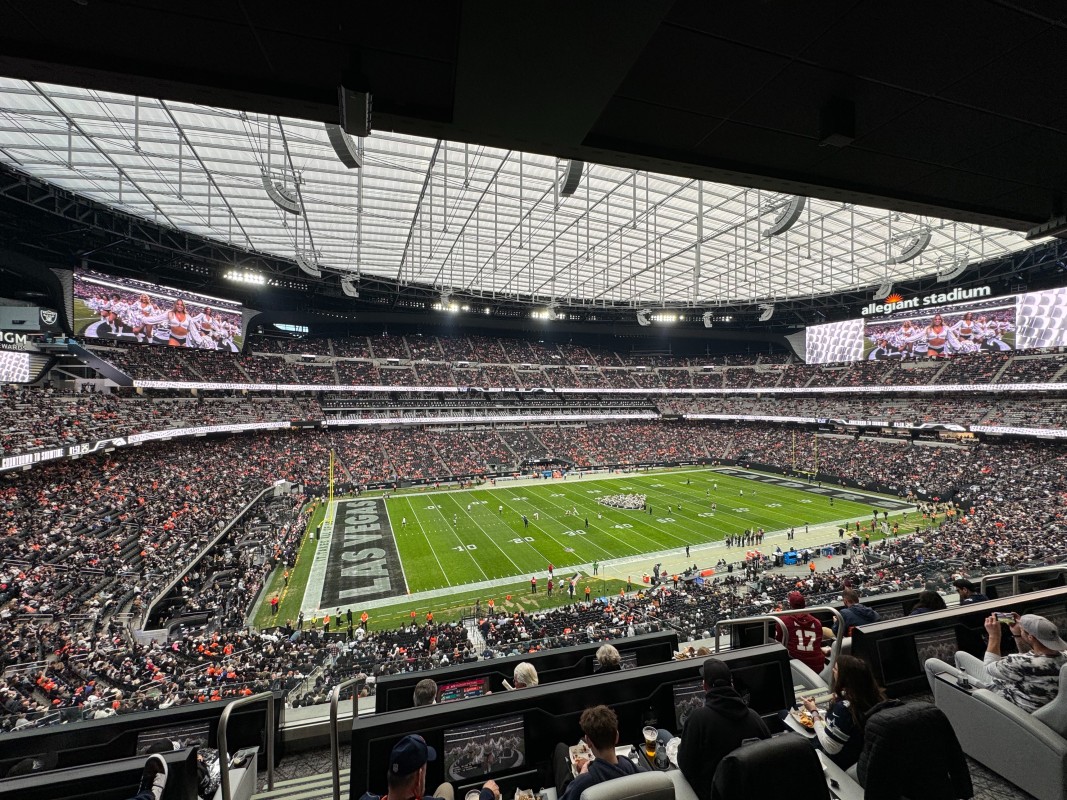Here's how one carrier is prepping Allegiant Stadium for the Super Bowl
TheStreet toured Verizon's network at Allegiant Stadium to see how it's prepped for the biggest football game of the year.

We’re just two days away from the biggest football game of the year, and while many of us will be watching it from the comfort of our homes or friends' houses for watch parties, we can’t forget about the 65,000+ who will pack Allegiant Stadium in Las Vegas this Sunday.
There, they will watch the game in one of the newest NFL stadiums that focuses on luxury and will be able to stay in the know through massive displays and TVs throughout. Of course, Allegiant has its own Wi-Fi network, but whether you don’t sign on or don’t want to, you’ll be sticking with your carrier.
AT&T, Verizon, and T-Mobile have all done the legwork ahead of the game, investing in their networks in the stadium, outside of it, and even in the broader Las Vegas area. Remember, Allegiant is right next to the iconic strip.
To unpack the network rollout and get a peek behind the curtain, I walked around Allegiant with Verizon (VZ) during the last NFL game of the season— Broncos vs Raiders on January 7, 2024 —and toured its network operations center.
Antennas, a lot of them

Jacob Krol/TheStreet
To keep the connected devices showing as close to full bars, or at least a connection, there needs to be the right hardware in place. On Verizon’s end, it starts many years before the Super Bowl to map out the space within the stadium and identify high-traffic areas.
Once Verizon’s team has a baseline and an idea of traffic and frequented fan locations, it starts to design and roll out a network plan. Antennas, also called nodes, come in many different shapes and sizes. You’ve likely seen rectangular and even triangular boxes in stadiums or arenas, which are no different from the ones on fake trees or the tops of buildings you might have encountered. They push out various types of 4G LTE or 5G; the latter’s most common bands in the United States are mmWave, C-Band, and Sub-6.
For Allegiant Stadium, Verizon aims to cover all the bases with a range of nodes deployed at the very top of the stadium—orbs hanging down known as MatSing balls—and individual antennas in each suite as well as others scattered around the stadium. Even on the popular walking bridge from Mandalay Bay to Allegitant, Verizon covered it with a node. Jacob Krol/TheStreet
Inside Allegiant Stadium, Verizon has about 250 mmWave 5G antennas—you can spot these and see them pictured as black rectangular boxes. That paint job is common with the network rollout at Allegiant; even the 4G LTE and 5G MatSing balls at the top hanging over the field are painted black. Verizon told us that’s on theme with the rest of the stadium and hides them more.
While mmWave provides the ultra-fast 5G speeds that are promised, Verizon also has a mixture of C-Band and Sub-6 for 5G speeds. Considering Verizon’s plan offers varying access to the 5G network, this also ensures all users can get some type of connection. As a backbone as well, Verizon’s 4G LTE network is in place at Allegiant Stadium.
Over the field, mounted from the ceiling, you’ll find 45 MatSing balls. These are a little tricky to spot but are best described as black orbs hanging down from the top along the field lines where the teams sit. 29 of these push out 4G connectivity, while the other 16 are 5G.
All of these work together to keep fans and connected devices covered wherever they might be—it could be the torch, in the nosebleeds, in one of the many suite options, or even while you’re buying concessions. Verizon can also monitor the real-time load on each node or antenna to address a network issue or even to light up more capacity if needed.
This is done by a team of engineers onsite at Allegiant Stadium and at an off-site location known as a Command Center, which Verizon has historically used for major events like the Super Bowl and even when Taylor Swift’s Era Tours came through Las Vegas. Here, Verizon’s team is standing by to see how the network is holding up and, if issues arise, to quickly troubleshoot and get the network back to normal.
The engineers and employees have total control and can monitor the network, including maps of the stadiums displaying real-time traffic for each antenna and the surrounding area of the Las Vegas Strip.
Monitoring the network is key during a big event, as is managing the other assets, but the real question is what this enables for fans in the stands. The real goal is that it should be the normal experience on your smartphone—if you want to upload an Instagram, check your email, make a video call, call a friend, or do anything else that requires the internet, it should all work as intended. Jacob Krol/TheStreet
I had the chance to perform some speed tests and found the result quite impressive during a packed game at Allegiant Stadium from a few areas, such as the main concourse, on the suite level, and even in a few lounges. I topped out at about 4,000MBps down when in direct line of sight with one of the mmWave antennas, but on average, you can expect around 1,000Mbps down and mid to higher hundreds for the upload.
Over the past few Super Bowls, data usage has increased, be it capturing a pivotal moment of the game or during the halftime show. 30.4TB of data was used for Super Bowl LVI, and 47.8TB of data was used last year at Super Bowl LVII. If the trend continues, we should see another double-digit spike, and for last year’s game, 60% of attendees were connected to Verizon’s network.
Related: Veteran fund manager picks favorite stocks for 2024 Jacob Krol/TheStreet
What's Your Reaction?



























































